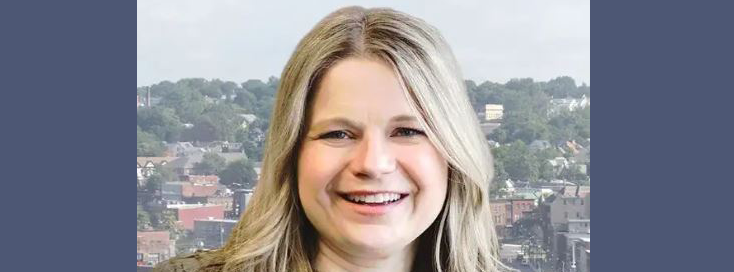Profiles in Leadership: T. Andrew Brown, Former NYSBA President 2021-2022
3.25.2024

The New York State Bar Association Committee on Leadership Development is profiling the association’s leaders in a series of articles that will appear on the website. In each profile, we examine the path they took to become a leader, the mentors that inspired them and the beliefs that made them successful. We hope these interviews will encourage all members of all backgrounds to pursue positions in leadership. This profile features former NYSBA President T. Andrew Brown.
What made you become involved and stay with NYSBA?
From when I first entered the legal profession I thought it was my responsibility to get involved with protecting the interests of the profession. There is no better way to do this than through bar association membership. Only those most involved will have the opportunity to make the biggest difference. Since becoming a NYSBA leader, it has always been important to me to protect the interests of the Association and the profession overall. There are more challenges confronting NYSBA and the profession than ever before, so my commitment will remain strong.
Describe your journey to be becoming an NYSBA leader?
While I became a bar association member at the local and state levels right out of law school, I never specifically set out to become a NYSBA leader. That was more of an unplanned evolution. I became a leader in the Monroe County Bar Association and the Rochester Black Bar Association and the National Bar Association long before becoming a leader of NYSBA. Having been a county bar president and an affinity bar president, as well as having served as general counsel for the National Bar Association, I developed a full grasp of the value and purpose of bar associations. My position as President of the MCBA gave me a seat in NYSBA’s House of Delegates. From there I became involved in committee and section work, including Chair of the Trial Lawyers Section, and special task forces. This work progressed me to becoming Finance Chair under five different NYSBA presidents, giving me a strong background to go on to become NYSBA president.
How do you describe your leadership style?
My leadership style is to consider myself an integral part of the team, not separate from the team. I try not to make it about me. I always strive to engage, encourage and inspire those I work with to buy into the concept of the larger good being the importance of the organization. Our Association benefits from leaders who take that approach. Those who make it more about them, quite frankly, add little overall value to the Association. If I can lead in such a way to bring out the best of everyone else around me, I have succeeded.
What leadership skills do you find most useful when working with NYSBA members?
To be a strong and effective leader in NYSBA, especially as you move up through the ranks of leadership, organization and management skills becoming essential. And you have to remember that our members are volunteers. Beyond that it’s a matter of finding skills to encourage others to want to become and remain active. You have to exercise your skills to convey the value and importance of that to advance the interest not only of our Association but the profession itself.
How do you determine which goals to set and work on as a NYSBA leader?
This in part is determined by the times in which you are called on to lead. Every past president has had to address certain issues simply because they came up during their presidency, such as the impact of COVID-19 for me. Many leaders have grand ambitions of what they would like to accomplish, but the realities of available time and resources sets in quickly. You often have limited time to achieve certain goals, but that has to be viewed in light of human and other resources available. Beyond that it’s trying to look at how you can make the biggest impact for our Association and the profession.
Can you describe a leadership challenge you overcame while at NYSBA?
One that quickly comes to mind is having to lead our Association through the difficult times of Covid-19. My entire President- Elect year, during which I was Chair of the House of Delegates, required me to conduct every House meeting virtually. Because we could not conduct in-person meetings throughout this time, the leadership challenge was to, instead, utilize technology to carry out Association business while also maintaining member engagement. I had to become efficient at running and attending meetings, and making presentations, virtually. During this period it was not unusual for me to be on seven or eight Zoom calls per day. This challenge lasted through my entire President -Elect year, and remained throughout my year as President.
What do you see as a greatest challenge for the legal profession in the next five years and how have you tried to address that challenge as a NYSBA leader?
Simply, the greatest challenge of the coming years is to remain relevant. Throughout my years as a leader, and especially during my years as President, I’ve stated this many times. Those bar associations that do not adapt with changes in society, technology and modern concepts of work and expectations will not be here in the future. Those that remain strong have adapted to current and expected future changes. This includes listening to our younger members and adapting to where they are and where they want the profession to go. They should be the strongest voice in our Association and placed in leadership positions. Those holding on to the past ways of bar associations are misguided and should be, frankly, no longer in leadership positions.
What advice would you give to future leaders?
Always put the interest of the Association first. Remain mindful that all members are volunteers and have other jobs and personal commitments which places limits on their time. Always respect and value NYSBA staff and find ways to show it. Set realistic goals and expectations within available resources. Define your success on how you advance the interests of the Association and the profession.






